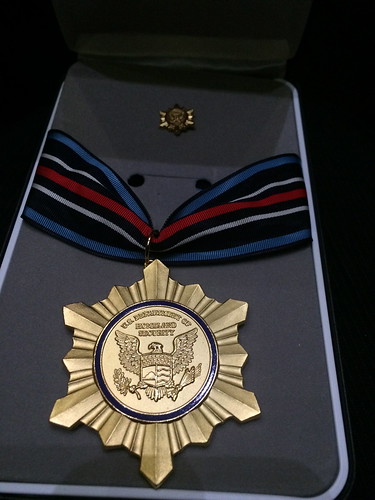
This post is part of the Science Tuesday feature series on the USDA blog. Check back each week as we showcase stories and news from USDA’s rich science and research portfolio.
When people think about keeping our homeland safe, they don’t usually think about animal diseases that threaten our nation’s economy and food supply, but USDA scientists do. Years of dedicated research on foot-and-mouth disease (FMD) is paying off.
A team of USDA’s Agricultural Research Service (ARS) scientists and their U.S. Department of Homeland Security (DHS) collaborators received the DHS Secretary's Exceptional Service Gold Medal Award at a recent ceremony in Washington, D.C. The award recognizes outstanding leadership or service distinguished by achievements of national or international significance that improves our homeland security. The team successfully developed and licensed the world’s first molecular FMD vaccine for cattle—the most significant scientific accomplishment in FMD vaccine development in the past 50 years and the first FMD vaccine that can be manufactured in the United States.
Research leading to this award was initiated by retired scientist Marvin Grubman while working at ARS’ Foreign Animal Disease Research Unit (FADRU) at the Plum Island Animal Disease Center in Orient Point, New York. Grubman created a novel FMD vaccine, which was used as the foundation for this work.
ARS scientists receiving the award were Luis Rodriguez and Teresa de los Santos at FADRU, and Laszlo Zsak at ARS’ Southeast Poultry Research Laboratory in Athens, Georgia. Other FMD team recipients were Lawrence Barrett, Jeffrey Babcock, Michelle Colby, John Neilan, Michael Santillo and Christopher Schutta, with DHS’ Science and Technology Directorate at Plum Island; and Lavanya Ratnam and Robert Webb, with the Office of General Counsel in Washington, D.C.
FMD is a highly contagious disease that affects cattle, swine and other cloven-hoofed animals. Infection can lead to critical economic consequences with potential severe losses in producing and marketing meat and milk. Although the United States has not had an FMD outbreak since 1929, the disease is still considered a serious threat to our nation's economy and food supply.
“This award is an achievement for all of us in ARS and emphasizes the importance of the work we do every day,” said Rodriguez, FADRU research leader. “Our FMD research is part of our mission, but also part of our homeland security. This was a joint interagency collaboration that turned valuable federal research into a vaccine and a product.”



